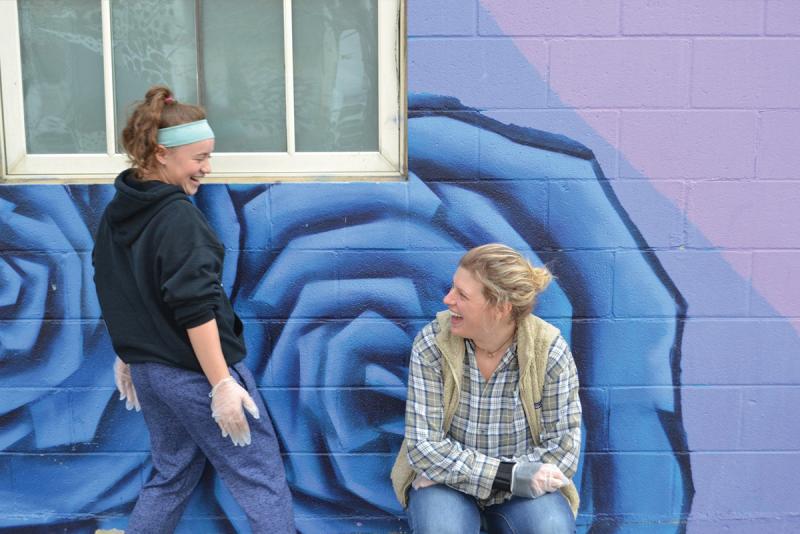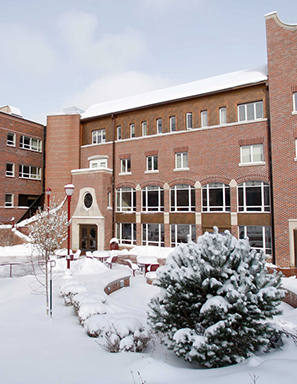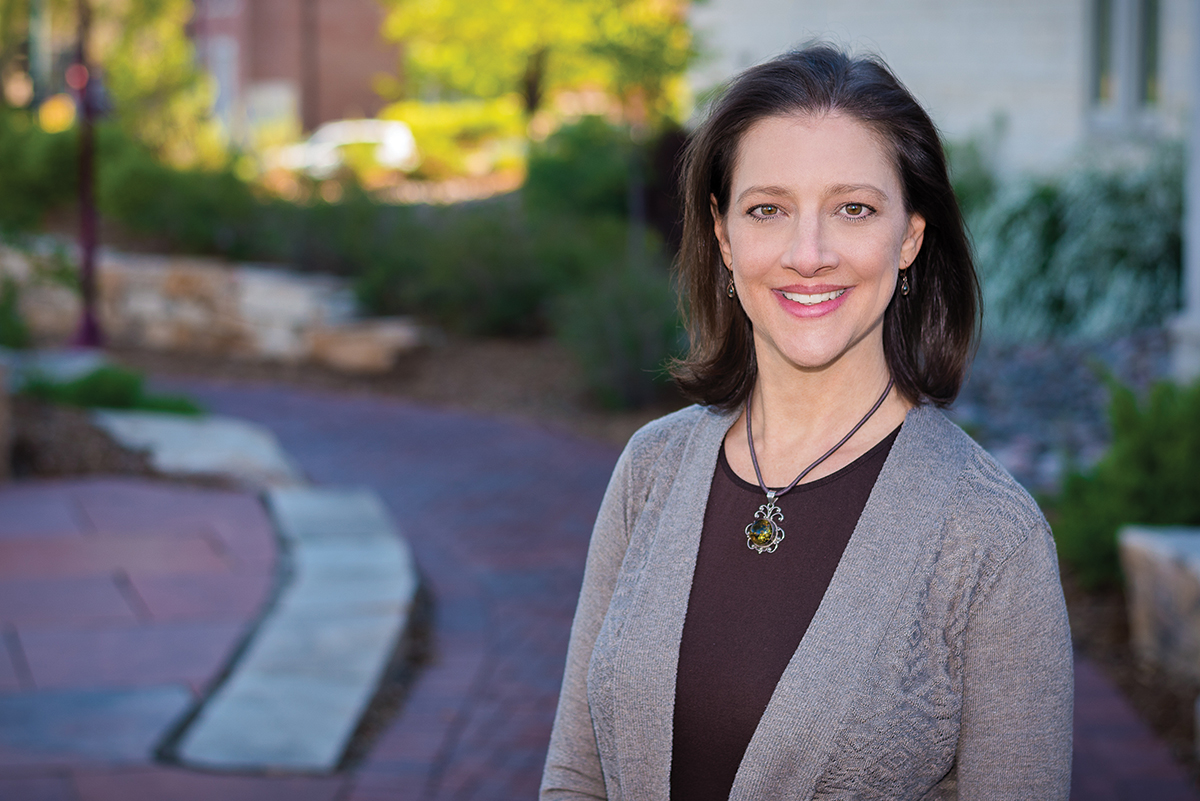Professor Heather Taussig received the 2022 Jeffrey Jenson Endowed Annual Research Award. In her address, she shared some of the lessons learned over 20 years of intervention research.
Watch
Supporting Positive Youth Development
Housed at the Kempe Center for the Prevention and Treatment of Child Abuse and Neglect, FHF for Preteens is a 1:1 mentoring and skills group program for preadolescent children with current or past child welfare involvement, including out-of-home placement. In 2012, Taussig began piloting Fostering Healthy Futures for Teens, which uses individualized mentoring and workshops to support teens with child welfare involvement. Both programs build on youth strengths and assets to promote healthy development.
In two randomized controlled trials, the preteen program demonstrated positive effects on child welfare placement and permanency outcomes, delinquency and juvenile justice involvement, mental health functioning and foster care costs. Analyses are ongoing, but preliminary findings for the teen program include an increase in child welfare permanency and a reduction in delinquency and juvenile justice involvement.
Beyond the data, the program’s effectiveness is demonstrated through the lives of its participants.
“My participation in Fostering Healthy Futures directly led to a strong sense of empowerment. Feeling empowered and comfortable with myself, I learned the importance of self-advocacy. I was no longer afraid to accept help or even ask for help when needed,” says Michael Olguin, who participated in the preteen program in 2002–03, when he was 10 and had been placed in out-of-home care for the first time. “The program also helped me begin to think about the future, which I had not done before.” Today, Olguin is a middle school science teacher.
Building Evidence
Located at the University of Denver, the Colorado Evaluation and Action Lab is a strategic partner for state government agencies and a bridge between those agencies and the research community. Part of the lab’s role has been to work as a coordinating hub building evidence for prevention services that could become part of the state’s plan to prevent unnecessary child welfare involvement, particularly out-of-home care, says Deputy Director and COO Elysia Clemens. “We’re building evidence for what works and under what conditions so that we start to maximize the federal drawdown under Family First Prevention Services Act,” she explains.
The lab conducted a systematic review of data on Fostering Healthy Futures and worked with Taussig to document the ways that the program meets requirements to access Family First funding. “Fostering Healthy Futures is a service that the counties really value,” Clemens says. “It matches the needs of Colorado youth.”
Currently, the preteen program has been rated by the Title IV-E Clearinghouse and is part of the Colorado plan. In California, where some 700,000 kids come into contact with the child welfare system each year, the California Evidence-Based Clearinghouse for Child Welfare provides scientific ratings of programs; FHF for Preteens is one of only two programs that have received its highest evidence rating.
“Fostering Healthy Futures is an amazing example of an intervention that has systematically and thoughtfully gone through an evidence-building process from theory to now a proven practice for a very vulnerable population of young people,” Clemens says.
Inclusion on registries matters, Jenson adds, because policymakers look to the registries when making decisions about what programs to implement and how to fund them. “They’ll go to the registries and use programs that are proven to work.”
Impact on the Community
Now that Fostering Healthy Futures has been independently and favorably reviewed by several different registries, Taussig says, they’re in position to implement the program more widely through community-based organizations in Colorado. In a recently funded bill to prevent youth homelessness in Colorado, FHF was included as an example of the type of program to support for expansion, based on its strong evidence.
Denver’s Adoption Options is one of the organizations implementing FHF. Its Flexible Families program works with youth in foster care who are in need of permanency through adoption. Like most young people in out-of-home care, these youth have a significant history of adverse childhood experiences. “There aren’t many mentorship opportunities for youth with these backgrounds,” says Senior Director of Programs Courtney Whaley, administrative lead for Adoption Options’ FHF preteen program. Through FHF, she says, “the youth can freely talk about their experiences without being othered or judged. That was a big draw for us.”
In the Adoption Options FHF program, which includes 13 youth, Whaley says, “the socialization piece has been huge. Kids are finding their voice and are able to ask questions and express themselves.”
“Sometimes we have more challenging kids in our groups, and there are moments where you wonder if you are really helping this kiddo or just providing childcare,” Whaley adds. But in the two cohorts Adoption Options has run, she says, “those kids are the ones getting the most out of group. If you ask them about how to have difficult conversations or not be peer pressured, they can give you elaborate answers and tell you how they have used it.”
Those outcomes matter to the agency but are especially meaningful to the families and youth they serve, Whaley notes. After a year in the program, “we start to see some changes with kids being able to build these prosocial skills. Families start to see some of those changes, too.” And that can make a difference in outcomes such as permanency and even further downstream as youth successfully transition to adult life. “It’s five years, 10 years down the road where we will see that huge payout,” Whaley says.
Scaling the intervention is the job of Director of Dissemination Michel Holien, MSW ’98, LCSW. She was the program’s first project manager, back in 2003–04, and recently returned to help expand the program. In addition to recruiting and training agencies in Colorado to run the FHF programs, the team recently developed Fostering Adolescent Skills through Mentoring, available nationwide to help organizations incorporate FHF’s skills-building curriculum into their existing mentoring programs. Agencies in New Hampshire, Florida and California have already signed on.
“A lot of organizations have mentoring and want to use the research and best practices,” says Holien noting that mentoring without skills-building is less effective. “This is an opportunity to expand the reach.”
That trajectory fits well with Taussig’s future aspirations. “My professional goal isn’t to create this one program for one narrow population. There’s so much listening, learning, adaptation, expansion and program dissemination we want to do!” she says.
“I’m trying to understand what aspects of mentoring work, and for whom,” Taussig explains. “We’re interested in creating generalized knowledge that can be used by a host of mentoring programs.” She notes that FHF has gathered two decades of quantitative and qualitative data from multiple informants and system records that can be analyzed to help answer questions about how to improve the child welfare system, reduce violence and other adverse experiences, and foster positive outcomes for youth and their families.






